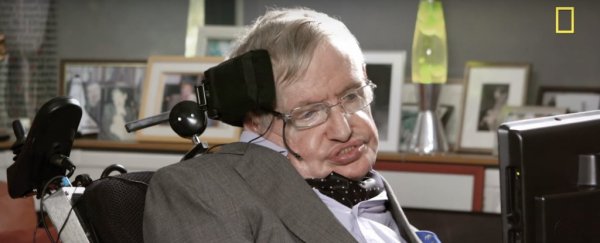Around 13.7 billion years ago, our Universe sprang into existence, but what was around before the Big Bang?
In an episode of Star Talk released just a few weeks before his death in March 2018, renowned physicist Stephen Hawking sat down with host Neil deGrasse Tyson to talk about what exactly pre-dated the beginning of our universe.
Hawking's answer put simply? Nothing.
But just because an answer can be summed up in one word, does not mean it's uncomplicated. Lucky for us, Hawking was one of the best science communicators in the world.

In his interview with Tyson, Hawking used the shape of the Earth as an analogy for the curved shape of the space-time continuum.
"According to Einstein's general theory of relativity, space and time come together for a space-time continuum…which is not flat but curved by the matter and energy in it," said Hawking.
To explain further, Hawking used the Euclidean approach to quantum gravity. In the Euclidean approach, ordinary real time is replaced by imaginary time, which behaves like a fourth dimension.
"In the Euclidean approach, the history of the universe in imaginary time is a four-dimensional curved surface like the surface of the Earth, but with two more dimensions," said Hawking.
So wait - six dimensions in total? What exactly does that mean?
Hawking said he believes the universe has no boundaries. In other words, the Euclidean space-time continuum is a closed surface without end, kind of like the surface of the Earth.
"One can regard ordinary and real time as beginning at the South Pole, which is a smooth point of space-time where the normal laws of physics hold," said Hawking.
"There is nothing south of the South Pole, so there was nothing around before the Big Bang."
Just like there is nothing south of a southernmost point, time can't exist before the Big Bang. Instead, time and space expand and spread outward from this singular point in time, like the degrees of latitude on planet Earth.
Even after passing away, Hawking continues to blow our mind.
A version of this article was first published in March 2018.
